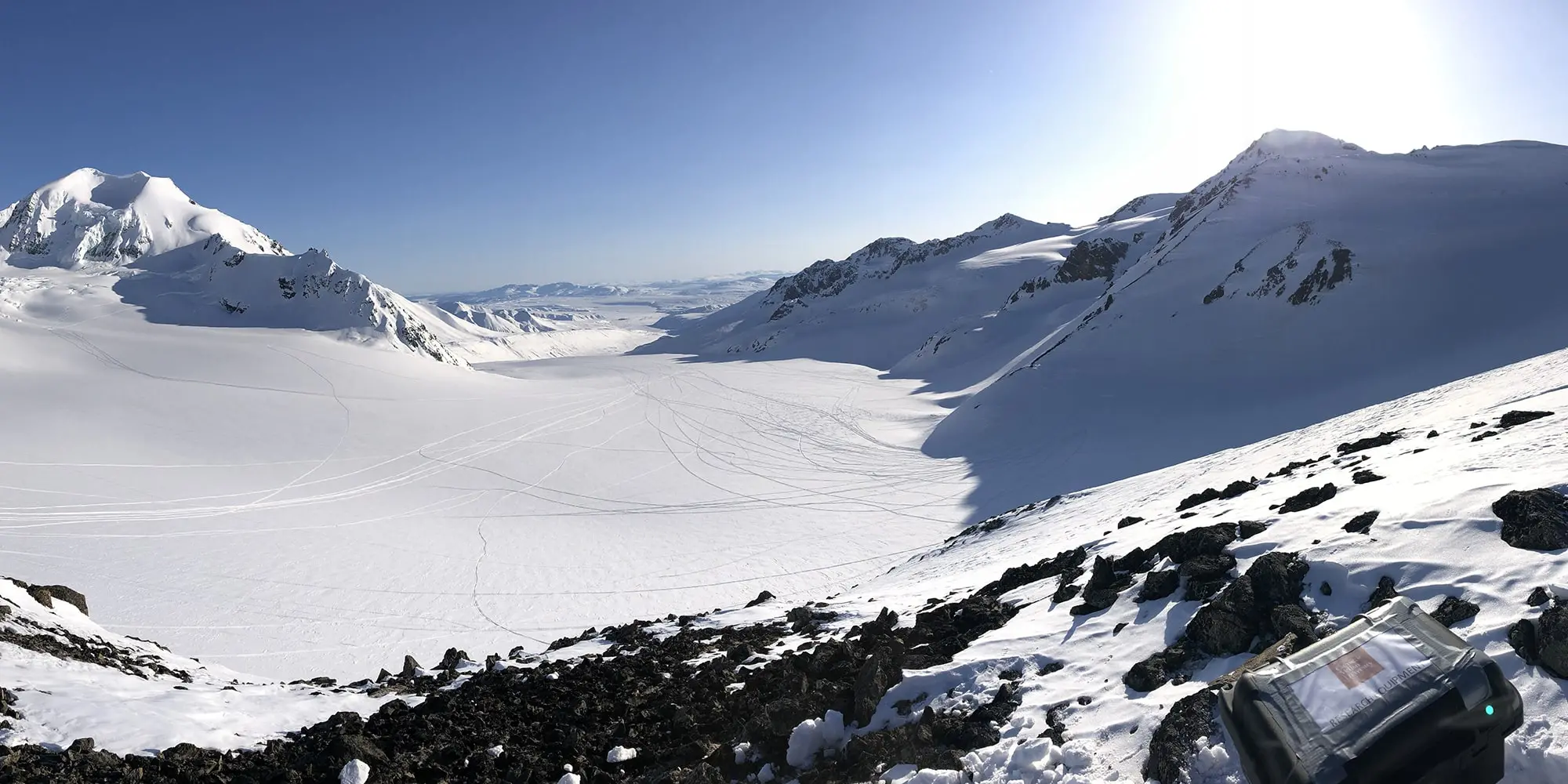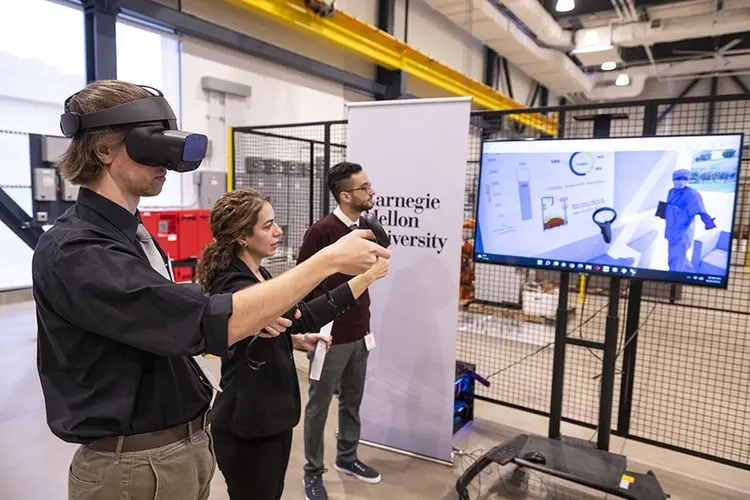
Team Projects Two Out of Three Glaciers Could Be Lost by 2100
Media Inquiries
Carnegie Mellon University's David Rounce(opens in new window) has led an international effort to produce new projections of glacier mass loss through the century under different emissions scenarios. The projections were aggregated into global temperature change scenarios to support adaptation and mitigation discussions, such as those at the recent United Nations Conference of the Parties (COP27). His work showed(opens in new window) that the world could lose as much as 41% of its total glacier mass this century — or as little as 26% — depending on today's climate change mitigation efforts.
The most recent Intergovernmental Panel on Climate Change report for policymakers brought together thousands of internationally recognized climate experts in an urgent plea to citizens and their governments to fight for drastic and immediate reductions to greenhouse gas emissions. The report warned that policymakers have less than three years to act to avert catastrophic and irreversible changes to the world's climate. The shared socioeconomic pathways, or SSPs, they used to model future scenarios for climate change are based on factors like population, economic growth, education, urbanization and innovation. These new pathways illustrate a more complete picture of socioeconomic trends that could impact future greenhouse gas emissions.
Only recently have researchers been able to produce global predictions for total glacial mass change using the new SSPs. Rounce, an assistant professor in CMU's Department of Civil and Environmental Engineering(opens in new window), aggregated these future climate scenarios based on their increase in global mean temperature to evaluate the corresponding impacts associated with temperature change scenarios ranging from plus-1.5 degrees Celsius to plus-4 degrees Celsius. His model is also calibrated with an unprecedented amount of data, including individual mass change observations for every glacier, and uses state-of-the-art calibration methods that require the use of supercomputers.
Rounce and his team found that in the SSP with continued investment in fossil fuels, more than 40% of the glacial mass will be gone within the century, and more than 80% of glaciers by number could well disappear. Even in a best-case, low-emissions scenario, where the increase in global mean temperature is limited to plus-1.5 degree Celsius relative to pre-industrial levels, more than 25% of glacial mass will be gone and nearly 50% of glaciers by number are projected to disappear. A majority of these lost glaciers are small (less than one square kilometer) by glacial standards, but their loss can negatively affect local hydrology, tourism, glacier hazards and cultural values.
Many processes govern how glaciers lose mass, and Rounce is working to advance how models account for different types of glaciers, including tidewater and debris-covered glaciers. Tidewater glaciers terminate in the ocean, which causes them to lose a lot of mass at this interface. Debris-covered glaciers are covered by sand, rocks and boulders. Prior work by Rounce(opens in new window) has shown that the thickness and distribution of debris cover can have a positive or negative effect on glacial melt rates across an entire region, depending on the debris thickness. In this newest work, he found that accounting for these processes had relatively little impact on the global glacier projections, but substantial differences in mass loss were found when analyzing individual glaciers.
His work provides better context for regional glacier modeling, and he hopes it will spur climate policy makers to lower temperature change goals beyond the 2.7 degree Celsius mark that pledges from COP26 are projected to hit. Smaller glacial regions like Central Europe, low latitudes like the Andes, and the upper areas of North America will be disproportionately affected by temperatures rising more than 2 degrees Celsius. At a 3 degree celsius rise these glacial regions almost disappear completely.
Rounce noted that the way in which glaciers respond to changes in climate takes a long time. He describes the glaciers as extremely slow-moving rivers. Cutting emissions today will not remove previously emitted greenhouse gasses, nor can it instantly halt the inertia they contribute to climate change, meaning even a complete halt to emissions would still take between 30 and 100 years to be reflected in glacier mass loss rates.
In a new study, researchers present predictions for the fate of all Earth’s mountain glaciers, which total more than 215,000 under various policy-relevant climate scenarios.
— Science Magazine (@ScienceMagazine) January 5, 2023
Read that research and more in this year's first issue of Science: https://t.co/3llGzLmhaC pic.twitter.com/JHfqSt2im3


